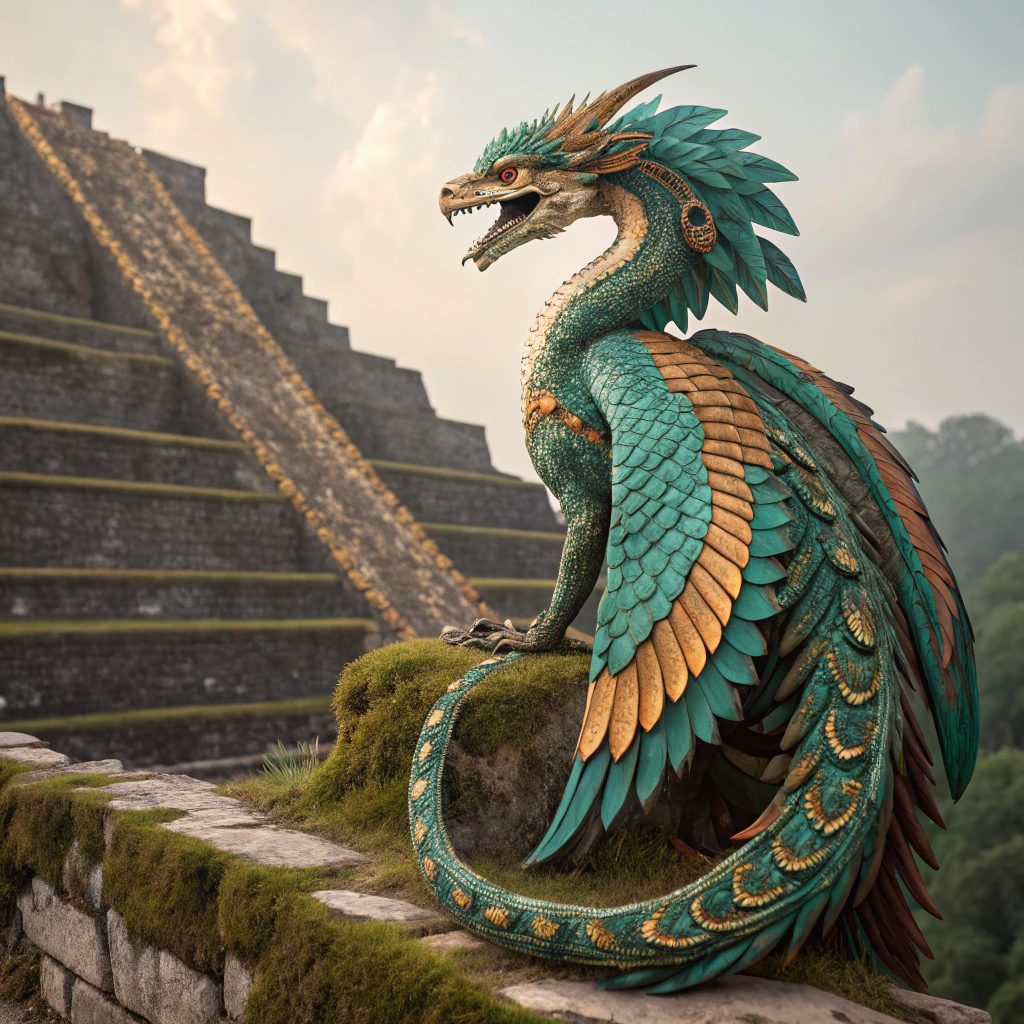
Mesoamerican Dragon Name Generator
Name: Quetzalcoatl
Meaning Origin Description Feathered Serpent Aztec The legendary plumed serpent deity representing wisdom and creationName: Kukulcan
Meaning Origin Description Plumed Snake Maya The Mayan version of the feathered serpent god associated with rain and windName: Xiuhcoatl
Meaning Origin Description Fire Serpent Aztec A turquoise-colored dragon symbolizing lightning and celestial fireName: Amaru
Meaning Origin Description Great Serpent Inca A mythical dragon-serpent representing water and fertilityName: Tepeu
Meaning Origin Description Conqueror Maya A sky dragon associated with rulership and divine authorityMesoamerican Dragon Details
| Habitat | Ancient temples and jungle ruins |
| Breath weapon | Spiritual energy |
| Usual alignment | Neutral |
The Mesoamerican Dragon (Draco mesoamericanus) exhibits distinct characteristics that set it apart from other draconic species. These serpentine creatures typically measure 30-40 feet in length, with vibrant, iridescent scales featuring patterns in jade green, turquoise, and gold that mirror the ceremonial colors of ancient civilizations.
Their skeletal structure combines avian and reptilian features, with hollow bones allowing for efficient flight despite their substantial size. Notable physical characteristics include feathered wings, often displaying intricate patterns similar to those found in Quetzal birds, and a distinctive head adorned with elaborate horn-like plumes.
These dragons inhabit tropical and subtropical regions, particularly around ancient temple complexes and dense rainforest canopies. They construct elaborate nests in stepped pyramids or natural cave systems, preferring locations near water sources. Their territory typically spans 50-100 square miles, which they patrol regularly.
Mesoamerican Dragons demonstrate remarkable intelligence and possess an innate connection to astronomical events. They are most active during equinoxes and solstices, often performing complex aerial displays that ancient peoples interpreted as divine messages. Their diet consists primarily of large prey, including deer and tapirs, though they show a particular fondness for cacao fruits.
Social behavior indicates a structured hierarchy within small family groups, with elaborate courtship rituals involving aerial dances and the exchange of precious stones. They demonstrate strong protective instincts toward both their territory and the ancient structures within it.
Regarding temperament, these creatures display a neutral to lawful neutral alignment. They show neither inherent malevolence nor benevolence toward humanoids but maintain a strong sense of order and tradition. They are known to react aggressively only when their sacred spaces are threatened or desecrated.
Their vocalizations include a range of sounds from low, resonant hums to sharp, musical trills that early civilizations often incorporated into their ceremonial music. They possess the ability to produce a unique form of fire that burns with a blue-green flame, thought to be related to their copper-rich diet.
Field researchers have documented their use of sophisticated hunting techniques and tool manipulation, suggesting intelligence levels comparable to those of higher primates. They demonstrate particular sensitivity to changes in their environment and are considered excellent indicators of ecosystem health in their native habitats.